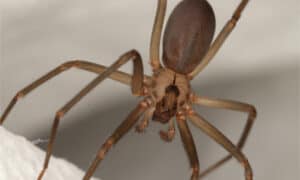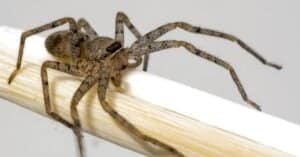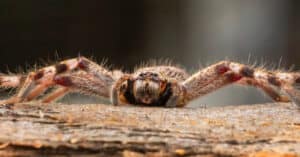Jumping spiders are relatively small spiders that belong to the Salticidae family. More than 6,000 species belong to this family. They live all over the world and represent approximately 13 percent of all living spiders. You have almost certainly seen a jumping spider at least once. They generally have a fuzzy appearance. They also have a pair of unusually large, forward-facing eyes flanked by a pair of smaller eyes. Some male jumping spiders have beautiful, shimmery colors that they display in their mating dance. Many people who harbor no love for other types of spiders think that jumping spiders are cute. And if you think that the adults are something special, wait until you learn more about the babies.
Jumping Spiders Lay Lots of Eggs
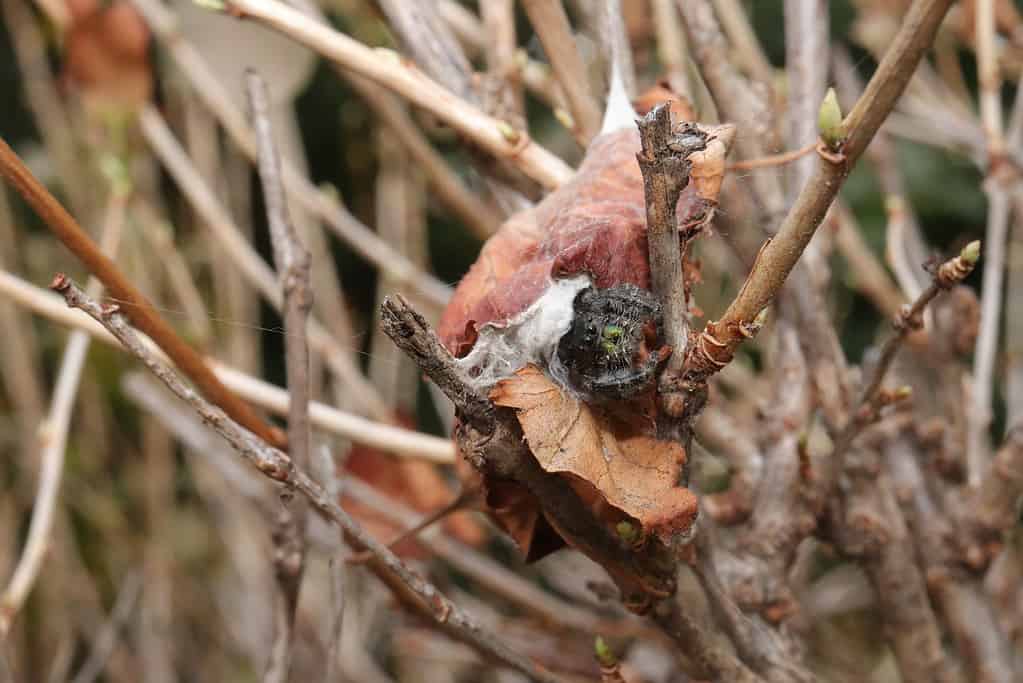
Female jumping spiders build egg sacs in hidden places and often guard the offspring until they disperse.
©R Lolli Morrow/iStock via Getty Images
Female jumping spiders can produce multiple egg sacs after mating just one time. Each egg sac may contain more than 100 eggs. It takes roughly 2 to 4 weeks for the eggs to hatch. Baby jumping spiders hatch inside the egg sac and stay there, under their mother’s care, until they have completed their first molt, after another 2 to 4 weeks.
Baby Jumping Spiders Are Called Spiderlings
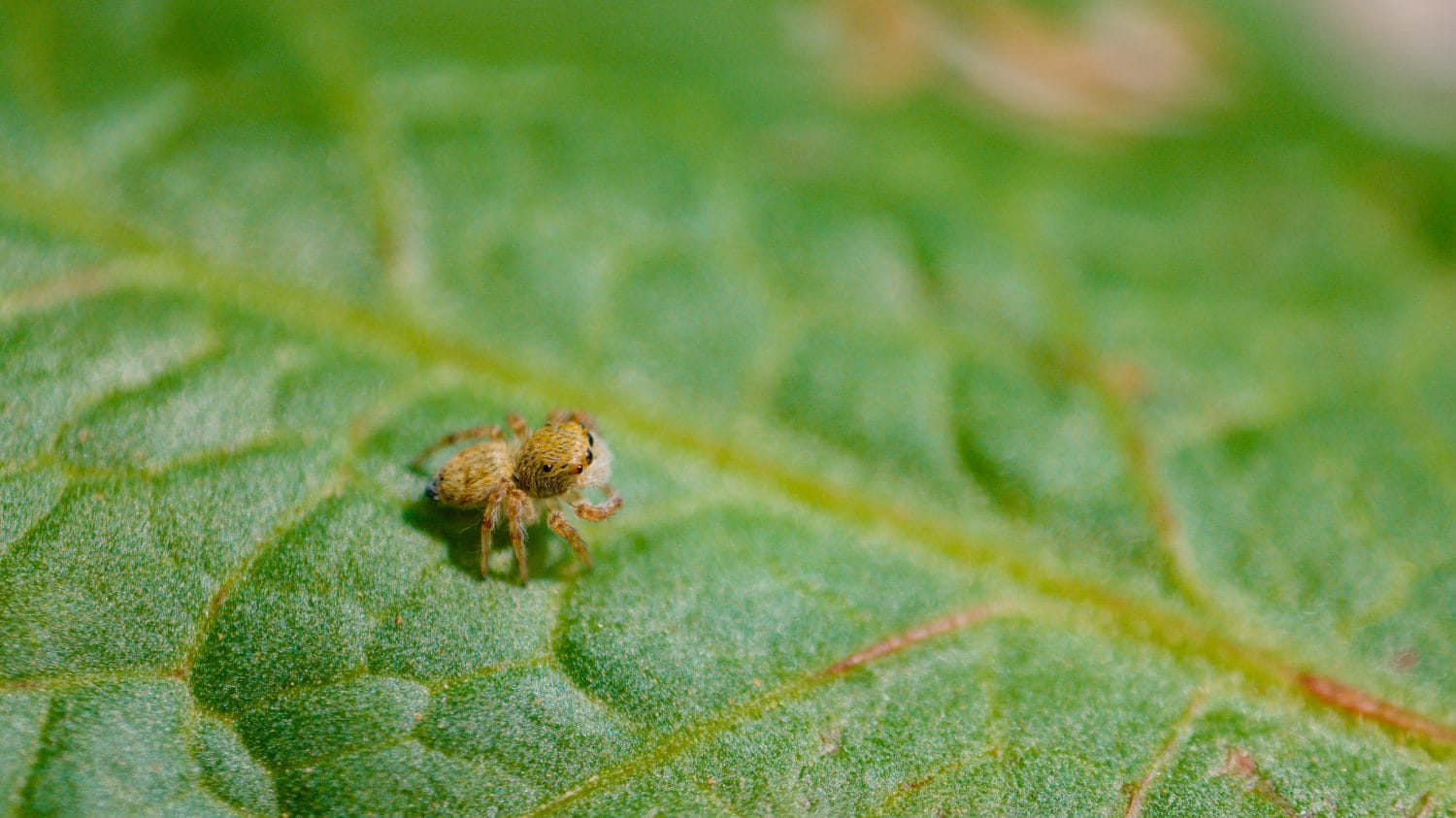
A baby jumping spider is so tiny it is dwarfed by ordinary objects.
©Flystock/Shutterstock.com
Newly hatched jumping spiders are called spiderlings or slings. After the first molt, the tiny babies emerge from the sac. They stay close to the egg sac until they complete a second molt, then disperse. At this point, the spiderlings become subadults. The female may then produce another egg sac and begin raising another brood.
Baby Jumping Spiders Eat a Lot
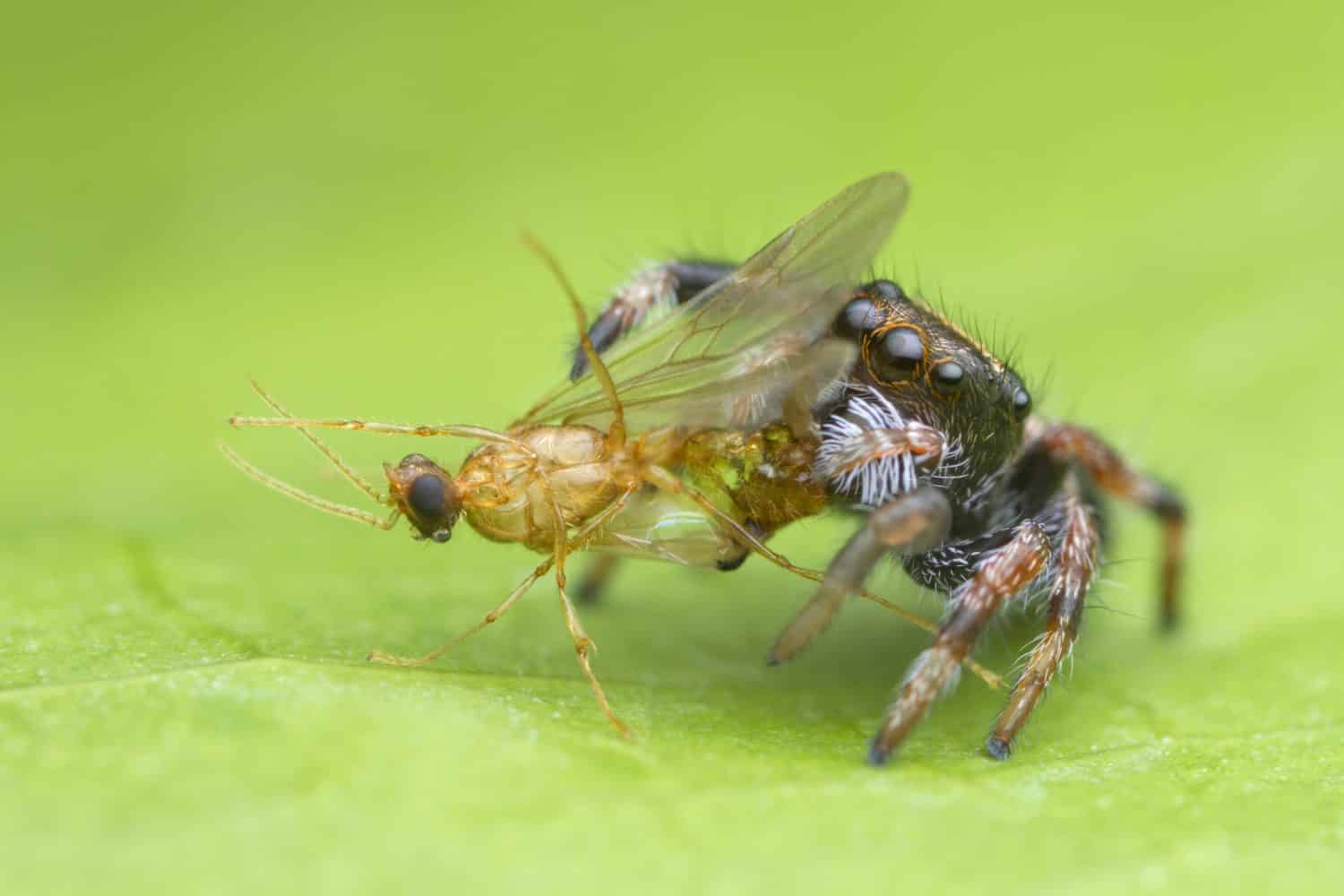
Tiny, little jumping spiders can capture and eat prey more than twice their size.
©feeling lucky/Shutterstock.com
From the time they emerge, baby jumping spiders are excellent hunters. They sometimes hunt in groups, and they have big appetites. Tiny jumping spiders can capture and eat prey more than twice their own size.
People who breed and raise jumping spiders suggest raising lots of fruit flies at the same time. A baby jumping spider eats a lot. In captivity, each spiderling may eat two or three fruit flies every other day. They also engage in cannibalism, eating other spiderlings from their own brood. Relatively few jumping spiders make it to adulthood, and being eaten by their siblings is one of their biggest dangers.
Baby Jumping Spiders Have Incredible Vision
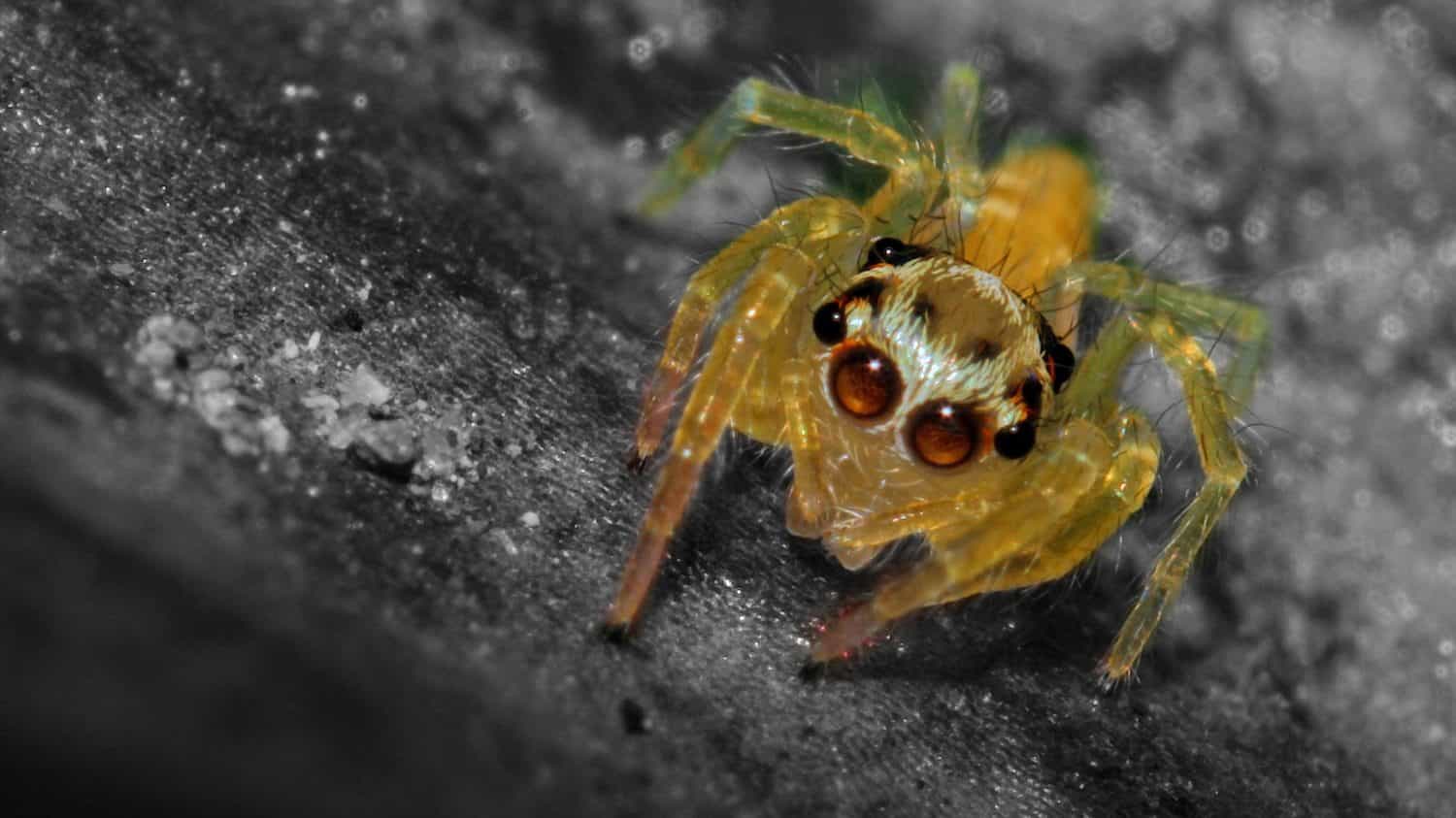
A baby jumping spider has four sets of eyes with special adaptations on the primary pair.
©ANDAVAR PHOTOGRAPHY/Shutterstock.com
Jumping spiders rely on uniquely acute vision to survey their environment and hunt prey. They do not weave webs to trap prey like many other types of spiders. Instead, they keenly observe the world around them, looking for prey that they can pounce on from above. They have four sets of eyes, though you may not easily discern the posterior medial set as it is somewhat vestigial.
When a baby jumping spider hatches, it already has approximately the same number of photoreceptors that adult jumping spiders will have. The retina on their primary, forward-facing set of eyes has photoreceptors arranged in multiple tiers so that they can receive more color information without losing spatial perception. They also have six muscles attached to the retina in each of these primary eyes, allowing them to shift their visual field even though their eyes appear stationary.
Jumping Spiders Can Jump Extremely Well
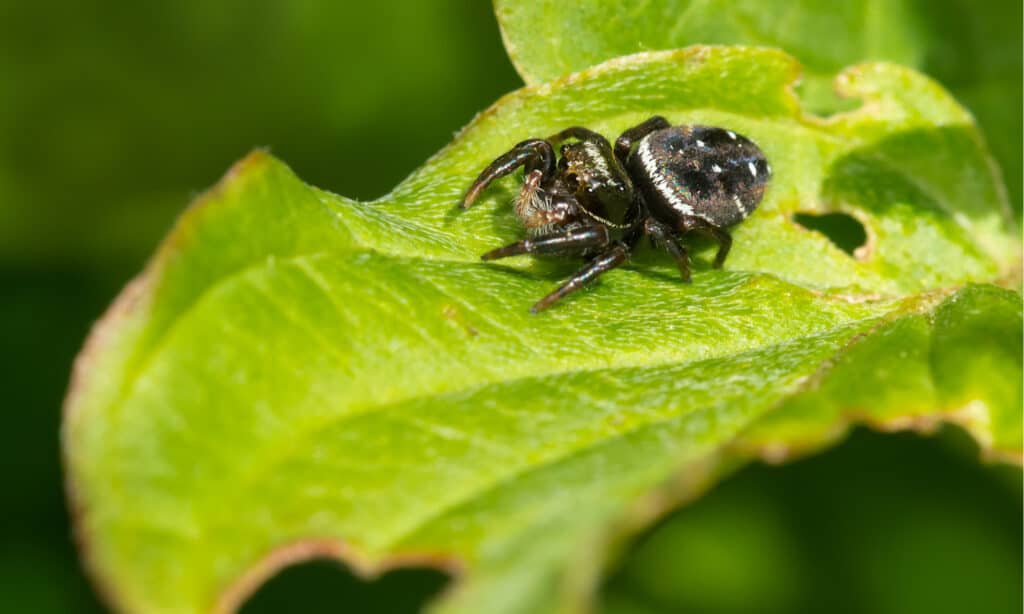
Some jumping spiders can jump more than 35 times the length of their own bodies.
©Paul Reeves Photography/Shutterstock.com
Even as a spiderling, a baby jumping spider can already jump. They have strong legs and rely on their jumping skills to ambush prey. Some jumping spider species can jump a few times the length of their body. Some can jump more than 35 times their body length. For safety, jumping spiders emit a silk line when making big jumps. This tether helps protect them in case they miss their mark.
Baby Jumping Spiders May Have Transparent Parts
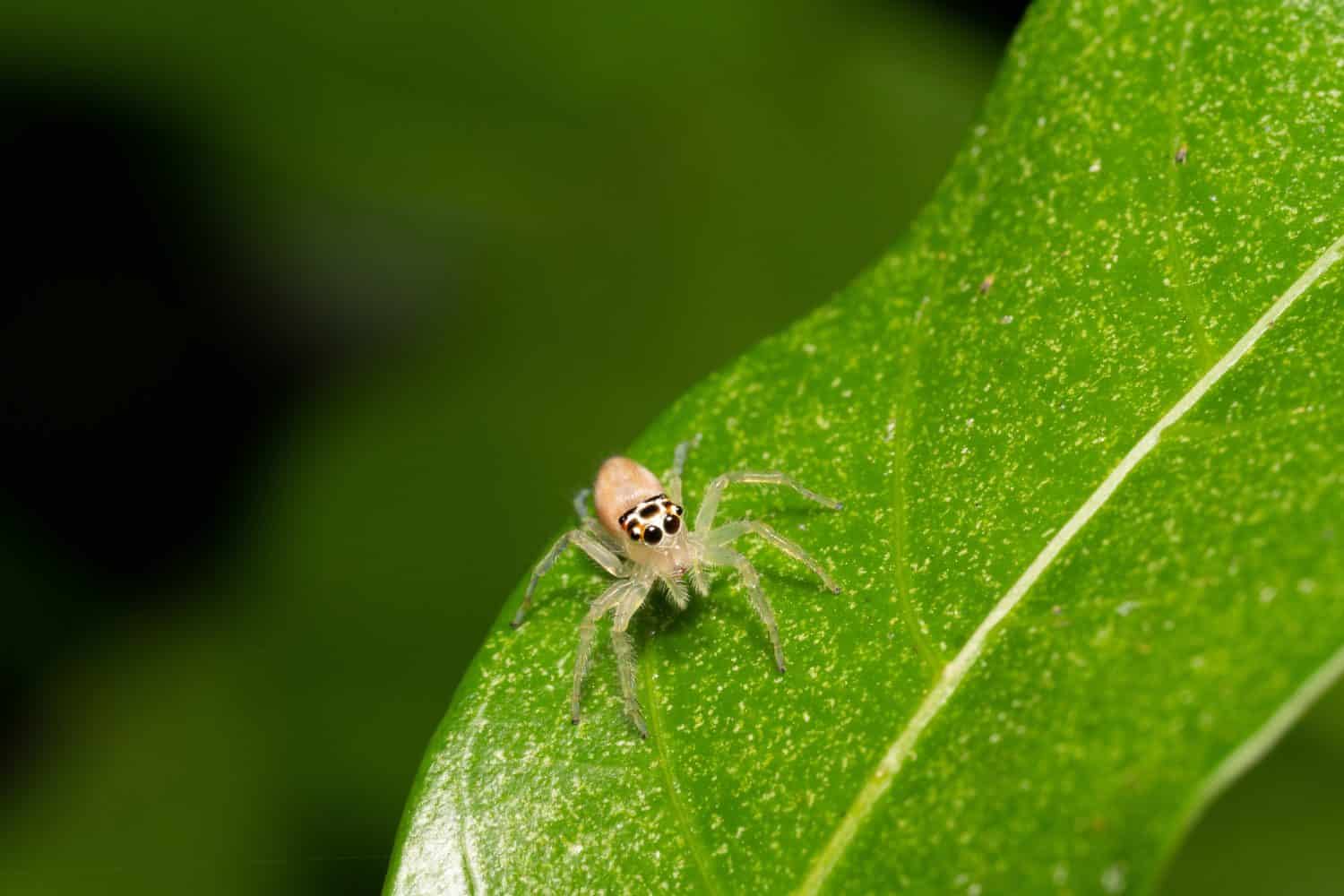
Baby jumping spiders often have transparent exoskeletons, or at least transparent legs.
©Jsian Lee/Shutterstock.com
Some baby jumping spiders have transparent exoskeletons. You can see right through them and observe their inner workings. Some have transparent parts, such as their legs. A baby jumping spider with transparent legs may, from a distance, look as if it can float along in midair. Some jumping spiders may retain transparent parts of their exoskeleton into adulthood, while others develop opaque coloring.
Jumping Spiders Are Generally Diurnal
Because jumping spiders have such great vision, it should be no big surprise that they hunt during the daytime. Unlike spiders that weave webs to catch their prey in the dark, jumping spiders actively search for and attack their prey in broad daylight. These spiders use their excellent jumping and running abilities to ambush prey that they can see. They would not fare so well hunting at night.
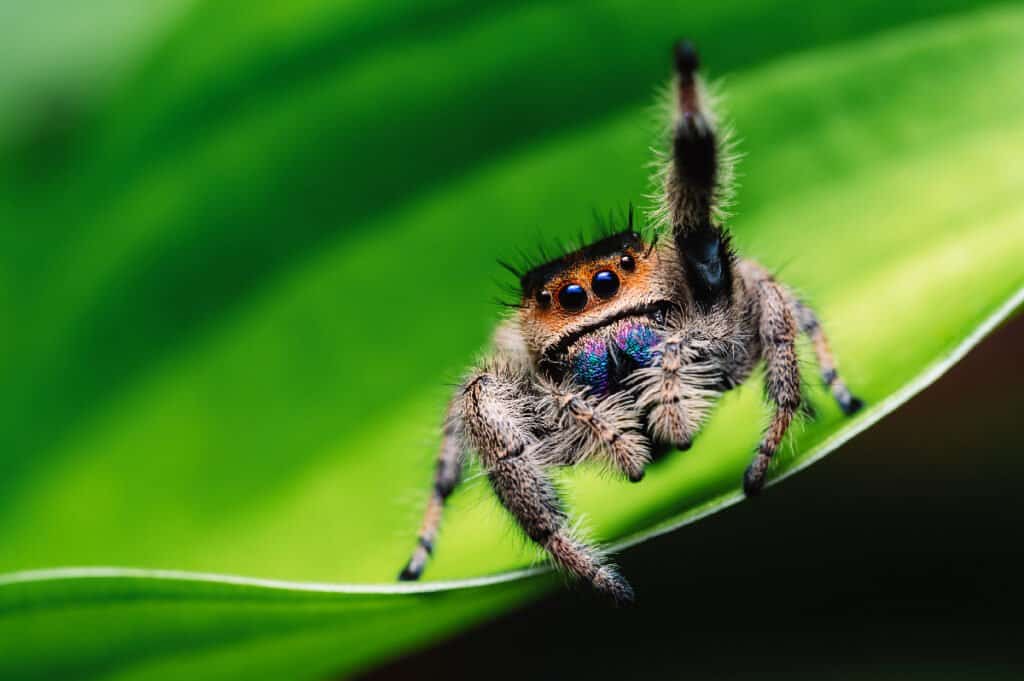
The emerald jumping spider possesses excellent eyesight and amazing leaping abilities
©iStock.com/Jan Rozehnal
The photo featured at the top of this post is © common human/Shutterstock.com
Thank you for reading! Have some feedback for us? Contact the AZ Animals editorial team.




